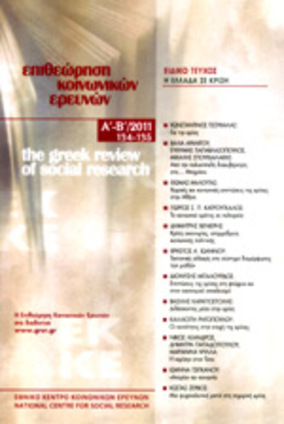Les fiefs electoraux en epire : Une analyse quantitative des elections dans le departe ment de Jannina entre 1956 et 1964
Part of : Επιθεώρηση κοινωνικών ερευνών ; No.Special, 1981, pages 49-92
Issue:
Pages:
49-92
Parallel Title:
Safe constituencies in epirus : A quantitative analysis of elections in the department of loannina between 1956 and 1964
Section Title:
Articles
Abstract:
Sale constituencies, as a privileged manifestation of patronage relationships in Greek countryside, constitute a particular mode ofpeasants’ insertion in the political life of the country and illustrate akind of relations between Power and basic structures (villagesociability). The maintenance, transformation or decline of these rela tions attest the differentiated evolutions that traditional societies undergo according to the uneven penetration of capitalist relations,and reveal to what extent the patronage system, stops, deflects, moderates, transforms or conceals the class aspects of social conflicts.The electoral process during the last five ballots in the department ofloannina, between 1956 and 1964, has been quantitatively analysedin this perspective. Such an approach strongly contrasts with traditional studies in electoral sociology: the prime objective is not the study of geographic distribution of political parties' influence or the measurement of the impact on voting decisions of some variables; it is rather the analysis, the votes resulting from social mechanismsand the quantitative evaluation of these mechanisms. The peasantelectorate is not considered as a category among others at the national level, it is endowed with a specificity which consists not in«who» is chosen but in «how» the choice is made. The unit selected for analysis is the village (considered as the most relevant level of aggregation for the selected variables), and not the districtor the department which considerably distort (cancel, reinforce or reverse) the correlations or associations found in smaller units. This paper presentspart of the results of this research: in chapter one,the regional contextis examined through a set of demographic, geographic and culturalvariables. In chapter two are studied the connections between these variables and one constructed variable («voting behaviour») supposed to measure the hold of patronage relationships in each village. Inthe last chapter, a model of multivariate analysis is proposed, whichleads to a typology of the social and electoral configurations in thearea. The maps provided with point out significant geographic continuities and discontinuities.
Subject:
Subject (LC):




